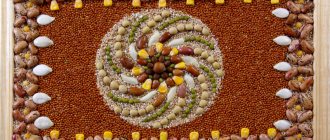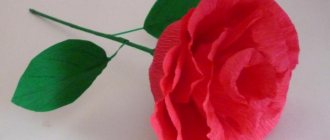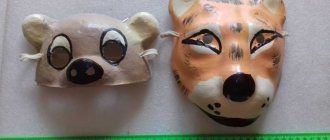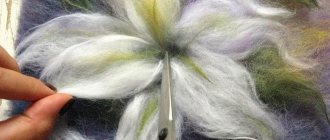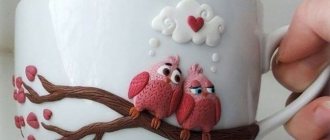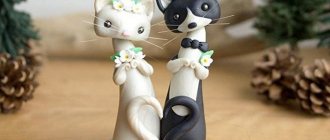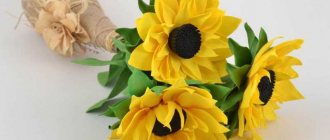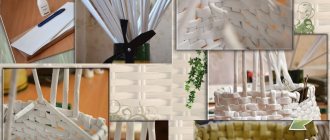What can you cook from frozen mushrooms?
Thawed oyster mushrooms cannot be stored for a long time.
For soups, hot sauces, and gravies, the product is sent directly from the freezer; there is no need to thaw it. For frying, minced meat is completely defrosted and excess water is drained. It is advisable to squeeze it out. What to cook:
To thaw, the workpiece is transferred from the freezer to the refrigerator and left for 5-8 hours. Do not keep at room temperature or in hot water. The taste will suffer and a lot of juices will be lost. The output will be a low quality herbaceous product.
Oyster mushrooms have many advantages over other mushrooms. It is almost impossible to get poisoned by them. Large fruiting bodies can be prepared and stored in the freezer in different ways. The only drawback is the irregular shape. It takes some practice to cut it accurately.
Previous Freezing How to freeze bananas in the freezer Next Freezing Is it possible to freeze horseradish in the freezer for the winter
How to make a tree from beads with your own hands
You should start by looking for an idea for a beaded tree. If this is a flowering or fruiting option, it will require the selection of certain colors of beads and beads. Green beads of different shades are almost always useful for foliage, unless it is an autumn tree. You also need to choose colored wire for the elements and ordinary, copper-colored wire for the trunk and branches.
Let's figure out in what order to make a tree from beads so that it takes on the appearance of a natural plant, only significantly reduced in size.
Tree formation order
Trees made of beads are formed according to the principle: from the particular to the general. At first we work only with thin wire and beads. Pour beads of the required color into a cup, mix if you need to use two or three shades, and begin to collect on the wire.
When the desired number of beads is in the center of the wire, it should be twisted to form a leaf or flower petal. Next, a similar element is collected on both sides to create an inflorescence or branch.
Finished branches or inflorescences are combined into groups. To do this, the free ends of the wire are twisted together into bundles.
Sometimes it is convenient to wrap such a branch with masking tape or tape, leaving the ends free, because you will have to form a crown from the branches. These free ends are used to wrap a thick wire intended for the barrel. Next, the trunk can be coated with alabaster or plaster, and then it must be left to harden. The second option is to twist all the wires well and wrap them with masking tape, on top of which wrap floss threads, placing them on colorless glue. Another way to create a barrel is using a glue gun with molten polyethylene.
The trunk with the finished crown needs to be “planted” somewhere. We take a container intended for a “pot” or “tub”, carefully place the beaded tree there and fill it with plaster. Since it takes time for the gypsum to harden in the mold, the tree will have to be fixed with any available means that will prevent it from moving.
Technicians
Craftswomen who are inexperienced in beading techniques should not be afraid to start making trees from beads, since most of the actions here are performed by twisting the wire in the right places, and not by correctly alternating beads. To form leaves of different shapes, you only need to know how to simply string beads on wire and parallel weaving, when the beads are strung two or three in a row.
Step-by-step instruction
Let's consider how to create a petal of a sakura flower, weave a corolla directly, make an inflorescence or a branch
:
- to create a “frame” of the petal, we string mixed pink beads of different shades onto the central part of the red wire (if there are not several shades of pink, then it is permissible to mix white, transparent, pink and a small number of red beads in a bowl);
- roll the part studded with beads into a ring, forming the outline of the petal (1);
- Using tweezers, we twist the wire in 2-3 tight turns, securing the petal, which will become the reference;
- on both ends of the wire sequentially, close to the finished petal, we collect approximately the same number of beads as on this standard (2–3);
- twist the wire again to make three petals (4);
- similarly prepare two more petals (5);
- if the inflorescence seems not lush enough, make a sixth petal;
- close the corolla of the flower so that the petals form a flower, and twist the wire several times (6).
- Let's prepare another wire (7), on which we will string burgundy beads according to the number of petals;
- each bead should be on a “leg” (8) made of twisted wire, as it plays the role of the center of the flower;
- we collect several pink flowers and turn each of them into an inflorescence by introducing a wire with burgundy “centers” (9);
- straighten the work so that each burgundy bead lies in the center of the pink ring;
- we prepare so many inflorescences that a whole tree of beads comes out of them (10);
- take two or three inflorescences alternately and twist them into clusters (11);
- We twist the finished clusters in the same way into branches and form a tree from them, not forgetting to tie the branches with paper tape (12);
- we spread plaster and coat the sakura trunk with it;
- pour the rest of the plaster into the stand to fix the barrel (13).
In order for beaded trees to sit tightly in their stands, they need to be clearly fixed while the plaster is curing. And it is better to do this not with your hands, since tension may cause trembling in your fingers, but with the help of stationary improvised devices.
Schemes for weaving trees from beads
There is no general scheme for creating an entire tree, just as there are no two absolutely identical plants in nature. It's more about the elements of a tree: branches, flowers, leaves, trunk. Assembly sequences and barrel processing options can also be described. But the arrangement of the branches should be chaotic so that the tree looks like a real one. The wire frame allows you to bend the branches in different ways, lower and raise them, so the finished work will have to be “combed” in order for it to become a real masterpiece of beadwork. Let's consider what elements craftswomen use to create beaded trees of different ideas.
Money Tree
To complete this work you will need not only beads, but also coins. If there is an imitation of Chinese money with a square hole in the middle, this is the preferred option: attaching the coins to the crown will be easier, since threading the wire into the hole will not be difficult. Many were left with pennies that were practically not used in money circulation. If the coins are shiny, then it is good to decorate the crown with them, but you will have to hang them last, gluing them with hot glue using a gun. It is advisable to degrease the coin so that it adheres well to the barrel. Then drip glue onto the crown and apply it, taking it in tongs, and press the money to this place.
Touching melted polyethylene is dangerous, as you can get severe burns. For the same reasons, you should not press the coin with your hands: metal has high thermal conductivity.
If you know how to solder, you can do it differently: start assembling each branch with a coin. It is advisable to find copper money, as this material can be soldered well. The coin will have to be cleaned, as well as the center of the wire. The center wire is soldered to the edge of the coin. It looks like an aspen leaf. If there are a lot of copper coins, then you don’t have to make beaded foliage. The wire extending from the coin must be strung with brown beads so that a twig emerges. A tree is made from such branches.
When there is nothing to solder with, you can drill each coin from the edge. This way it will resemble a leaf more than being glued flat to the green crown. Hanging by the hole, such a coin will be movable, which will add charm to the finished tree. When the wind blows, the coins will sway like aspen leaves.
Another beaded money tree is assembled without coins at all.
It is enough to have on hand chips or beads from a stone that brings wealth to the house
:
- topaz;
- peridot;
- citrine;
- aventurine.
The chipped stones go into work first, because they will become the ends of the branches and “leaves” at the same time. Stones, sharpened or faceted in the form of beads, are good to use as “fruits” of the money tree. It is better not to entangle a large bead with wire on top. It is better to string a single black bead onto the center of the wire so that it becomes the center of the fruit. Thread both free ends into the hole of the stone bead. Next, you should form sepals or just a twig. To make such a tree look beautiful, you need to make branches without stones, but simply with foliage, and then assemble everything into a single composition. Such a tree should be presented with the explanation that it “bears fruit” with a certain stone, which brings, for example, success in trade or prosperity to the house.
Blooming trees
We looked at one type of flowering tree - sakura - above. Now our task is to create a tree with flowers and foliage. Take for example acacia (mimosa), whose flowers are characteristically different from sakura. It is better to find yellow beads or beads with a matte, velvety surface. A sprig of mimosa flowers is woven like this: a bead is strung, then the green wire is twisted several times until a “leg” is formed. At a distance from it, another bead is strung and is also fixed by forming a “leg”. You need to make several of them, placing them on different sides of the center.
Mimosa leaves look like needles. To create such an element, take one green bead, string it on a wire, and then both ends of the wire are passed through another four to five similar beads. Next, the same number of beads is strung, and the free end of the wire is passed through all but the outermost one. So on the same wire it will be possible to form a whole mimosa leaf of 9-11 elements.
Each mimosa branch is collected from inflorescences and leaves. You need to try to make the flower clusters hang and not bristle, then you will be able to assemble a magnificent tree from them.
You can also collect trees from beads with large flowers. An example in nature is magnolia. The leaf of the plant is large, so we will assemble it from the central part, studded with dark green beads, on the sides of which we will make two arcs with the same beads tightly adjacent to each other.
The flowers of the plant are white; they can be made according to the same pattern, but connecting the arcs closer to the base of the flower. It is good to make branches from flowers and leaves by twisting the wire and wrapping it with brown floss threads. It is important to ensure that the thread turns fit snugly against each other.
Once the branches are ready, it's time to start assembling the tree. The magnolia trunk is solid and thick. For it, you can choose a core of thick wire, onto which you wrap several layers of masking tape to thicken it. The same tape must be used to secure the turns of the inserted branches. It is recommended to start assembling the crown from the top, since the tree trunk there is always thinner. As you move towards the bottom, you will wind more and more turns of tape, so the barrel will become thicker. You also need to tightly wrap brown floss threads over the tape.
Next, you can “plant” the tree in a tub and fill it with plaster, or make “roots” for it from the ends of the wire. To do this, take a small cobblestone that has a decorative appearance. The ends of the wire are from the lower branches, trunk braid, etc. this stone is wrapped around. In this case, the roots that will protrude outward should be trimmed with brown or black beads. It is better to cover the rest of the wire with imitation earth or moss.
Autumn trees
In summer, almost all maples are the same, but autumn paints them in different colors. A riot of yellow, red, crimson, and orange colors can be found in a maple grove, but the most amazing are the leaves, which simultaneously contain three colors: green, yellow and red. We have to weave a maple leaf of a similar species.
The work is done in parallel weaving
:
- one red bead is strung in the center;
- two similar beads are added to its sides;
- both ends of the wire are passed through them, and a triangle is obtained;
- three beads are laid out - red, yellow and red - in a row, where two ends of the wire are passed;
- the operation is repeated, but with two yellow beads located between two red ones;
- the next row contains only three yellow beads;
- then the wire is passed at both ends into two yellow beads;
- the last bead of the sheet is green, and behind it the wire is twisted to secure the work;
- According to a similar scheme, the second “foot” of the petal is assembled, but on the fifth row (of 3 yellow beads) you need to hook the wire to the already finished “foot”, also at the level of its fifth row;
- on the other side, another “foot” is attached symmetrically;
- two more paws are made to get “fives”;
- At the discretion of the worker, two more shortened legs can be made, since in nature a maple leaf sometimes consists of 5 full and 2 reduced veins, and not just 5.
Having understood how to collect a three-color leaf, any craftswoman will be able to make monochrome leaves for her maple grove. For one tree you will need to weave more than a hundred identical leaves. For a natural look, you can give them different sizes.
Twisting the leaves into branches and the branches into the trunk is done using the traditional method. If there is a large amount of wire in the barrel, you don’t need to add anything, but if it seems a little “thin,” then it’s worth introducing a thick wire into its center.
A tree of this scale may turn out to be too heavy to be supported only by plaster in a tub, then it is worth creating something like roots: twist the ends of the wire around a heavy stone, which is placed in a vessel that serves as the base of the work. To fix the stone, it should be filled with plaster or even cement. Treat the surface after the gypsum has hardened.
An autumn tree in nature is surrounded by fallen leaves. You need to take the time to collect a few more leaves to put them at the foot of the work.
Late autumn is characterized by a beaded tree with fruits, but without foliage. This could be rowan and viburnum, caught by frost. Bunches of berries are made of red or orange beads. A single bead becomes the center of the berry. For rowan, a black bead is chosen, for viburnum, a red one. It is strung on a wire, after which both ends are passed into a large bead that imitates a berry. The ends of the wire coming out of the bead are twisted into a stalk. Such stalks are combined into a bunch. Crown it with a well-expressive snow cap, created from white beads strung on wire according to the principle of sakura petals. Their size must be chaotic in order to imitate nature.
It’s a good idea to cover the tree trunk in places with cotton wool, and lay it down the base to imitate snow. The ice base can be created from transparent beads, which will look even more magical than cotton snow.
White birch
A woven birch tree, either made of beads, stones or sequins, looks very fascinating.
It is especially beautiful when using different shades of green. The height of the product can vary from 25 cm to 50 cm. Detailed instructions can be found here: white birch made of beads with a diagram and photo. The technique is looped, branches are formed of different sizes. For example, a small birch tree can be woven in this way:
- Thread a little glass bead onto a 60 cm wire, twist a loop four times out of five beads, then form two similar loops.
- You will get a small twig and continue to weave it using a loop method on a segment of 5 cm, picking up five beads for one loop.
- These loops need to be formed in 12 pieces and the third branch is woven on the remaining piece of wire.
- The result will be one branch consisting of three small branches. It follows that a birch tree will look beautiful with such clusters formed on one leg and eliminates excessive thickening.
Video tutorial on Russian birch with beads
It is large in size and is woven using a different technology, with thicker branches. The process is very simple:
- A large number of beads are collected onto the wire and ears are created from seven glass beads, formed in a row of 12 loops or more.
- Then bend the wire in half and twist the loops together.
- A lot of such branches are made (60 pieces) so that in the end you get a lush tree.
- The barrel is made in a very interesting way, painted in an artistic style with white gouache, and finally coated with acrylic varnish.
Popular articles Making Valentines: 16 ideas
Love tree
Making a heart-shaped product with your own hands and giving it to a dear person, for example, a mother or friend, on Valentine’s Day will be an excellent gift.
A detailed master class will tell you how to create a beautiful decoration and at the same time have a lot of fun. It is very good to involve children in this work; they will not find it monotonous, since the craft is unusual and the process is interesting.
Preparing for work
Before you start beading, I advise you to purchase a bead spinner. This will make your work process easier. You will need the following material:
|
and:
|
Master class on creating a heart from beads
In this process, two colors of glass beads are used - white and red.
Flower
You need to make 7 flowers from white beads.
- Fold the 80 cm long wire in half, but not in half. Make one tip 10 cm longer. We collect seven beads on the spinner, lower them to the fold and twist them into a loop with three turns.2. Next, we collect 17 pieces of bugles and make a loop-shaped grip along the top and twist it three times. The petal is made from two loops.
3. Make the third loop of thirty beads. Look at the bottom photo to see what the petal should look like.
Important! Twist all the loops three times, then the flower will turn out without a large space in the middle. A small hole can be decorated with some kind of bead
4. We weave the second petal in a similar way. The leg of the twist should be approximately 1.5 cm and only then we form a loop.
5. Connect them so that the second lies slightly on the edge of the first. We weave three more petals in the same way. This is the flower you will get.
6. Using the same principle, we weave 13 flowers from red beads.
Branches
You will need to weave 14 white branches, and 20 red branches.
| We string a rice-shaped bead onto the middle of the 80 cm wire and twist it seven turns. |
| We stretch the pearls from one side of the wire and bend the loop about 1 cm, twist it to the end of the loop. Don’t forget to twist the formed loops with beads between each other in pairs of turns. |
| We do the same with pearls at the other end. The result is this part of the twig. |
| By alternating, we further create small elements of branches from the beaded accessory. We collect about 17 white beads on the spinner and form a loop. On the other side, we will make a loop from a transparent droplet. You can see how it looks in the photo. |
| You can finish weaving a twig with different beads at your discretion. For example, to weave a branch like the one in this picture, add a rice bead, a pearl, and six white beads in the shape of a loop. |
Lay out all the beading pieces in front of you. We will put the whole composition together.
Heart decoration
The base of the heart is divided into two parts and since the bend is uneven, we will fill the smaller part with white weaving, the other with red.
First we apply a white branch to the heart-shaped blank and wind it in the form of a spiral, as shown in the photo.
Next, we apply the flower and twist it around the base in the same way. Look how beautiful the element looks.
We wrap the heart with twigs, alternating in different directions.
The design initially occurs in this order: a twig, a flower, two branches on opposite sides, a flower, and so on. This is what the completed design looks like.
To make the craft look more beautiful, you need to tightly tie the weave of wire with white threads.
We finish the weaving of the second side from red twigs and flowers in a similar way. Look at the photo below to see what the weaving of beaded elements looks like.
In a similar way, we cover the wire with scarlet threads carefully and slowly, so that your creation does not lose its beauty.
Heart beauty design
When a charmingly beautiful composition is finished, it is necessary to adequately decorate it.
|
|
We hope that the section on making trees of happiness was useful and interesting for you. There are many options for craft stands, such as:
Good luck with your new creations!
Tree of love made of beads: diagram, photo
The tree of love is a kind of amulet for the family, which will definitely give positive energy to all household members, and especially to those who are in love. You can order such a tree from a craftsman or make it yourself, using diagrams and ready-made photos.
The tree of love is a good gift and souvenir. It can be given as a gift for a wedding, anniversary or any other occasion.
How to make a beaded love tree:
- Such a tree, or rather two trees, have a trunk base made of wire. This is what allows the wood to bend and make the shape of a heart.
- Two trees are woven in exactly the same way. Choose your favorite design above and start creating trees. Please note that they should make a lush crown only on one side.
- Secure the trees to the foundation and wait until dry.
- Bend the tree trunks to make a heart shape.
- Decorate the foundation according to your preferences.
Options for beaded “love” trees:
Frame - metal or plaster
Original love tree with flowers
Tree of love in the shape of a heart
Two-color love tree
Souvenir tree of love made of beads
Weaving patterns and how to read them
Creating crafts or jewelry from beads requires perseverance, diligence, and a strict sequence of actions. For this, many schemes have been developed to help you choose the right size and amount of material. They can be found in special magazines, newspapers, and downloaded from the Internet. Not all materials contain complete information or a detailed description of the progress of work. Often the problems are:
- The beginning and end of the diagram are not indicated;
- The rows are not numbered;
- It is difficult to understand the direction of the thread when weaving;
- Poor print quality, unclear image;
You should start learning by mastering basic techniques. The more practice you have, the clearer more complex patterns will become. Such processes will be deposited in tactile memory; when visually perceiving the pattern, indicating the direction of the thread will no longer be necessary.
On any beading pattern, the details are marked with circles and highlighted in color. The numbers at the beginning of each row indicate the number of beads. The number of rows is marked above the picture. If the product is multi-colored and voluminous, then next to each dot there will be a number indicating the number of beads in one set.
Bonsai trees made of beads: how to weave?
Bonsai is a small tree in real life, demanding and “capricious” to care for. However, such a tree is considered very auspicious if it is in the house. It gives its owners health, good luck and prosperity. You can also weave a bonsai tree from beads, charging it with your positive emotions and love.
Scheme
Ready product
Weaving techniques
Anyone can learn to weave with beads. To do this, you will need to choose the scheme you like and study the techniques used in it. Flat, three-dimensional products are created in various ways, using large, small, elongated beads. You need to start with the simplest master classes, mastering more complex ones over time. You can create with beads using any technique. There are the following types of weaving:
- Needle-shaped. The simple version is usually used to create individual details of the composition (flower stamens, insect legs). Several beads are strung on a wire, the last one is bent around and the base is threaded through the next one and tightened.
- Flat parallel. The most popular and simple technique. It is used for weaving leaves and petals. The wire is passed through the beads according to the pattern, creating a new parallel row.
- Volume parallel. The principle of operation is identical to the parallel method, but the rows are not located in the same plane. This is how they make animal figures, flower buds, etc.
- Hand weaving. Weaving is done on one thread. The beads are connected to each other along the vertical and horizontal axis, grabbing beads from the adjacent row with a fishing line and gradually increasing them. The patterns are designed for bracelets, paintings, and decor for flower pots.
- French. Beads are strung on two ends of the fishing line and arcs are made, capturing the outer beads. The technique is suitable for making flowers and tree leaves.
- Monastyrskoe. The base is a cross of 4 beads. By increasing elements of the same type, a finished product is obtained. Suitable for flat and voluminous crafts.
- Looped. The finished elements look like loops. In this way, individual components of the composition are made or used as a basis. Several beads are strung on a wire and tightened in a loop, an indent is made and the steps are repeated.
- Mosaic. Weaving with tight fitting beads. Each piece is attached vertically, sandwiched between two beads of the adjacent row. Stringing can be circular or cylindrical.
- Mesh. In this way, various objects are braided, for example, Christmas tree decorations, flower stands, beaded trees, vases. The size of the mesh cells is determined by the number of beads.
- Brick stitch. The arrangement of beads in horizontal rows resembles brickwork. The beads in each row are located with a slight offset relative to the adjacent strip. The technique is suitable for creating flat, three-dimensional shaped products.
Popular articles Waltz of the Flowers with Easter Eggs
Orange tree made of beads: how to weave?
In this case, the tree is decorated not only with small green beads imitating leaves, but also with large orange beads resembling fruits. The craft is very beautiful and original, and can become the best gift and home decoration. In addition, the orange tree is a symbol of prosperity and wealth!
Scheme
Ready product
Making a golden tree from beads
Twigs for the tree
To make the tree's foliage look as natural as possible, it is better to collect a sufficient number of bags of beads in different tones: dark red, red, orange, yellow, gold.
About 4-5 bags of 150 grams will be enough. Translucent beads will look great.
To achieve the fall foliage effect, we will make several batches of twigs, each with a different color.
The branches will be arranged from darker to lighter colors, starting from the top of the crown. This way you will get a smoothly changing range of foliage.
Twig for tree
Take a piece of thin copper wire 40-60 cm. Step back from the edge and start stringing beads of the same color, as shown in the photo.
If you want to make small leaves, then leave 12 beads on each loop, and for large ones - up to 20 pieces.
After the first leaf, simply twist the wire a couple of centimeters, then string beads in the same way onto the two remaining ends of the wire to make the side leaves.
Beaded side leaves
One branch should have 5-11 leaves, arranged symmetrically or with a slight shift.
It will turn out just fine if all the branches turn out to be absolutely identical. Give the leaves a sharp or oval shape by pulling out the loops. Bend each branch slightly into a smooth arc.
As soon as the blanks contain 15-35 branches of different colors, you can proceed to the next stage.
One branch of a golden tree
Lots of branches for the tree
Take 3-4 identical branches and form them into one bundle. To do this, use pliers to carefully twist the ends of the wires from each branch together, attaching another, thicker wire (copper or aluminum) to them, then tightly wrap the stems with tape or thread, securing them.
Using the same principle, the remaining blanks are fastened into large branches.
Fastening several branches
tree trunk
Once the bundles of colorful branches are ready, it is time to make the tree trunk. Use steel or aluminum wires twisted together for the frame if it seems to you that one is not enough.
Making the trunk of a golden tree
Dark red or red branches are tied to the end of the wire with tape - this will be the top. Step back a few centimeters and boldly take on the next branch.
The next tier of branches should be a little lighter - orange, then yellow and, finally, golden branches will appear closest to the roots.
The tree trunk is almost ready
About halfway through the trunk, don’t forget to add some more long, strong wire to secure the structure. Leave 4-7 cm of the ends of the wire untouched - then they can be spread apart and stable roots can be formed.
The tree trunk itself can now be slightly bent, after which the entire craft can be checked for stability.
Checking the barrel for stability
The result of creating a tree from beads
Now that you have achieved what you want with your own hands, you can admire the golden beaded tree, as if it had just stepped out of a holiday autumn card.
To get a more complete understanding of the needlework process, watch the video with the master class.
Finished golden tree made of beads
Thanks to the sites masterclassy.ru and ped-kopilka.ru for the photographic materials
16 770
Openwork butterfly
The principle of weaving in it is exactly the same. But:
- each wing consists of two parts, which are woven separately;
- the wings themselves are made of beads of two colors. The diagram shows how they should be combined;
- the body of the butterfly consists of one column of beads of different diameters;
- the wing contains several elements that are difficult for beginning craftsmen.
To make a ring, start weaving from the top edge of the wing. Having collected one black bead on the wire, twist the wire, then collect 4 more black and 4 white beads, start weaving a ring
Note that the wire goes twice through 2 black, 7 white and again through 2 black beads
The two lower “feathers” of our wing are drawn onto one thread. The lower second wing of our beauty is symmetrical, so we knit from the top in any direction.
Connect all the parts as the diagram suggests, the beaded butterfly is ready to fly.
Easter eggs made of beads with a face (with patterns)
The custom of presenting beautiful Easter eggs made of beads has been known for a long time. If you have not yet created such beauty, we suggest that you definitely try to make such an Easter decoration.
We will need:
- thermal sticker or paper image;
- white egg blank (made of plastic or foam);
- a thread;
- hook;
- decorative elements for decoration;
- fishing line or special monofilament for beading;
- beads of different colors or bead thread;
- a piece of foam;
- scissors;
- glue;
- needle;
- a piece of felt.
Stages of work:
We cut out an oval from felt; the face will be placed on it. Apply it to the iron-on sticker and cut out the image to the required size.
We apply the face to the felt and trim the sides with a strip of beads, which you will make in advance.
Next we sew on a thread of larger beads.
Now we crochet the egg. Below is a detailed description:
If you don't know how to crochet, just wrap the egg with ribbon:
Coat the felt side of the face with glue. Carefully attach to the egg.
We decorate the craft with a thin ribbon. Along the egg.
Attach a crown to the top; it can be purchased at craft stores. If you don't have one, use a beautiful bow made of thin ribbon.
Next, glue beautiful beads to the back of the craft.
Let's start decorating the egg stand. We attach a large wooden bead to a piece of foam plastic at each corner. These will be four legs. Decorate the edges with braid. On the other side of the stand we glue four leaves, and in the middle there is an egg.
We finish decorating the craft with flowers.
Here are some more beautiful options:
This is the easiest option. You can also draw the desired design of the egg blank and cover it with beads. PVA glue and a toothpick will help with this.
You can also wrap an egg, previously coated with glue, with a thread of beads.
As you can see, there are many options. Here are interesting patterns for braiding eggs with beads.
Bead tree “Eywa”: diagram
The Eyva tree is very similar to the willow or willow familiar to the Slavic people. The tree has thin long branches that fall all the way to the ground. You can also make a similar tree from beads and weave its branches from multi-colored beads, most often lilac or violet.
Finished goods:
Tree made of multi-colored beads
Euwa tree with lighting
Purple Euwa tree
Basics of technology
Weaving trees from beads for beginners starts with finding a suitable pattern and purchasing materials. Both can be easily found on the Internet without leaving home. Looking at the catalog, you will be surprised not only by the color range of beads, but also by the variety of their shapes. Naturally, prices will vary significantly. The reason for this is the texture of the material. Beads can be made from:
Beads come in a wide range of colors
In addition to multi-colored beads of any quality, you will need to stock up on what to string them on and special needles for ease of setting. Don't risk taking on a global project right away? Practice the little things. Weave a keychain onto a bunch of keys or as a decoration for your mobile phone.
How to weave?
There are several beading techniques:
- needle-shaped;
- volumetric parallel;
- flat parallel;
- hand weaving;
- French;
- monastic;
- looped;
- mosaic;
- mesh;
- brick stitch.
There are several beading techniques
For those starting their career in this field, it is recommended to use the usual stringing of elements on a thread. To obtain a pattern, you can alternate colors in a certain sequence. A variety of bracelets and other baubles are made using this principle.
Features of choosing a base for stringing
The basis for bead products is thread, fishing line, and wire.
According to the recommendations of MK, beaded wood is woven using the latter, and here it is very important to choose the right thickness. Wire that is too thin will not withstand repeated twisting
Popular articles Christmas tree made of satin ribbon
Too thick – it will not allow for quality twisting. Experts consider soft copper wire to be the best option. Here we will prepare skeins of it.
Soft Copper Wire for Beading
Schemes and their reading
Most bead crafts are assembled according to specific patterns. However, beginners should not dive into weaving patterns to create trees from beads. There will be more benefit from video lessons than from parsing incomprehensible icons, which will take a lot of time to read, although in the future it will be useful to get acquainted with the symbols.
An example of a pattern for weaving a tree from beads
If you delve into the essence of what is drawn and written, it turns out that there is nothing supernatural in these tables. The numbers indicate the number of the row or element; the outgoing arrows indicate the direction of weaving. Several beads enclosed in one circle are a recommendation for combining them in the next row into one element. It happens that in the diagram two arrows come off from one bead at once. This means that the appropriate number of elements must be added to it. Video programs will help you study all the intricacies in more detail.
To make it convenient
When doing beading on a table, cover the work surface with a linen napkin so that it is not slippery. This will save you from accidentally scattering tiny beads all over your apartment.
Several master classes: DIY bead wood for beginners
“Cherry tree made from beads is the most suitable option for beginners, since the work involves beads of a single soft pink color.”
Beading large crafts is not so much a complex process as it is labor-intensive. In the case of creating a tree, it is divided into several stages. The first of them is preparatory. On it you will prepare the necessary consumables. Next comes the actual work. The beads will need to be strung in a certain sequence on a wire, twisted into various loops from the blanks, formed into leaves, branches, flowers, and decorated with a trunk and crown. Fixing the finished product in the stand will complete the work. Now in more detail about popular trends.
Training ground for beginners
Sakura tree made from beads is the most suitable option for beginners, since the work involves beads of a single soft pink color. To create the first branch you will need a meter-long piece of wire. 7 beads are strung on it so that they are strictly in the middle of the base. Now you need to connect the ends of the wire under the outer beads and twist them so that an element resembling a petal is formed. We separate the ends of the wire on different sides and, stepping back 1 cm from the first petal, repeat the above-described manipulation. Your branch should have 11 petals. Now we put both parts of the wire together and twist the petals in pairs. The end result should be a real twig. One sakura tree requires 90 similar branches.
Required tools and materials
From tools and materials we will need:
- wire with a diameter of 0.4 mm, preferably copper-colored;
- copper or steel wire for a frame with a diameter of 2 mm;
- thick wire or wire with a diameter of 5 mm;
- pliers;
- floral tape or masking tape;
- container for plaster base;
- plastic bag;
- alabaster, sand and cement;
- PVA glue;
- water;
- finishing plaster;
- toothpick or brush to form the bark;
- sandpaper;
- sponge;
- ocher and dark brown gouache paints;
- acrylic lacquer;
- pearlescent acrylic paint;
- artificial moss and stones for decoration;
- a nice pot if you want to cover the base.
Weaving an autumn tree from beads takes a lot of time, so to speed it up, you can use a spinner - it will help you get beads onto the wire faster. In total you will need 2-3 meters.
Variant of weaving sakura from beads
Next, we’ll look at how to weave a sakura tree from beads. To make a sakura tree, you will need materials such as beads of different colors (light shades of pink and darker), wire, tape, glue, alabaster, paints, and foil.
Getting started is worth starting with blanks. You need to connect two types of beads. Take a wire about half a meter long, string 6 beads and place them 10 centimeters from the edge, form a loop. Next, we place 6 more beads on the long end of the workpiece and do similar actions, forming a second loop. The distance between the loops should be approximately a centimeter.
Thus, we make 11 loops, then connect them in such a way that one loop remains at the bottom, and the rest are located opposite each other. Then we connect the opposite loops together. Thus, a branch of the future tree is formed. You need about a hundred such branches.
We connect three branches together and get the future upper branches of the tree. You need several of them. Then we twist two main branches and get the middle branches of the tree. There should be three of them. Next, we connect 5 branches together and make several such blanks. These are the lower branches.
Next, we begin to form the tree using the upper branches, wrap them with tape, thicken the trunk with thick wire, then add middle branches and also thicken the trunk. Then we add lower branches and thicken the trunk. We take a mold, place the tree in it and fill in the solution.
You can varnish the top. Remove the foil and straighten the tree branches. Thus, we get a craft in the form of a tree made of beads.
Autumn tree made of beads. Weaving pattern
Autumn is a magical fairy tale. On a warm autumn day, this fairy tale comes to life, playing with the sun's rays in the yellow crowns of the trees. What could be more beautiful!.. Take a piece of the autumn miracle to your home by making a bright tree from beads in golden tones .
To make birch beads you will need:
- beads of yellow-green shades,
- copper wire,
- carnelian stone,
- aluminum wire,
- threads,
- gypsum,
- gouache,
- clear varnish,
- form for the base.
1. Look carefully at the diagram and create many, many branches from beads and stones. I got 72.
2. Divide the branches into eight equal groups of 9 branches each.
3. Twist the branches in each group: first - two at a time, then double ones - together. And then weave the resulting branches together with the ninth in the middle (the one made of stones) into one large branch.
You should have eight large branches.
4. Attach the branches to pieces of aluminum wire using threads. Shape the tree trunk. Like this:
5. Cover a deep plate with cellophane and fill the base of the tree with plaster.
6. Mix plaster and PVA glue. The solution should have the consistency of liquid sour cream. Apply the mixture onto the tree trunk with a brush.
7. Paint the trunk with white gouache, and the clearing with green and yellow.
8. Using black paint, make a pattern characteristic of a birch tree on the trunk. When the paint is completely dry, coat the barrel with clear varnish. Straighten the branches.
Hooray! The autumn beaded tree is ready!
But if you are not new to beadwork, try making an autumn maple from beads. I will now show you a pattern for weaving maple leaves.
A little effort and patience - and you will have an elegant autumn tree on your table!
Beautiful trees of love and fidelity
There is a sequence of formation and in order to achieve the goal, you must first have patience, perseverance, attentiveness and, of course, not miss the advice of professionals in this matter.
In yin-yang style
It is created by intertwining with each other, from two small intertwined similar options. Moreover, you can come up with two colors yourself, in this case black and white. Its originality lies in the fact that the trunk does not need to be painted or plaster, but only wrapped with threads. Then you need to place it in a round stand, strengthen it with plaster mortar and decorate it with the same beads. The technique is suitable for beginner needlewomen. We invite craftswomen to create a yin yang here by studying a step-by-step lesson.
Happiness made of beads and stones
Such a tree is believed to bring health, happiness, love and prosperity. If you use expensive stones in the structure, beads or beads that attract with their beauty and brightness, you will end up with a tree that attracts good energy and happiness will come in life. The most commonly used stones are rose quartz, aventurine, turquoise, sapphire, granite stone or mother-of-pearl plates.
Let's look at a simplified weaving method. First, 5 pieces of twigs with seven pebbles are created from wire - for the top. For the second tier - 8 branches with nine jewels and the third tier, consisting of 12 branches with eleven stones. Next, the clusters are connected to each other in groups and great “happiness” is formed. The roots are separated to the sides in the form of rays, then twisted for a stand. In conclusion, the created creation can be decorated in different ways: on a wooden stand, decorated with decorative moss, or plastered in a shallow container and the surface decorated to your taste. Follow this link, where you can easily take a master class on weaving a tree of happiness.
Cherry blossoms
Sakura is the national symbol of Japan and the structure of the flower consists of five petals. The Japanese believe that each of the petals has its own purpose - health, prosperity, peace in the family, joy and love.
Sakura made of beads, alluring with its appearance, has never left anyone indifferent. Japanese style will perfectly decorate your home with soft pink shades and add warmth and friendliness to your guests. You can make it using a lush and bright loop method, or you can give it less volume, then the sakura will turn out delicate and fragile, or using French weaving, that is, creating large flowers using circular bead weaving
You can learn about making trees from a step-by-step description of various options for weaving sakura and final arrangement on a stand, decorating in a variety of ways
Beaded tree - sakura: how to weave?
Blooming sakura is a delicate and beautiful tree, which, as a talisman, will protect its owner from the negative influence of others and help him find true love. This tree should be woven from wire and pink beads. Decorate the tree with lush “blooming” of beads, make it lush, with heavy” hanging branches on a thick trunk.
Blooming sakura from beads:
Weaving pattern
Ready product

